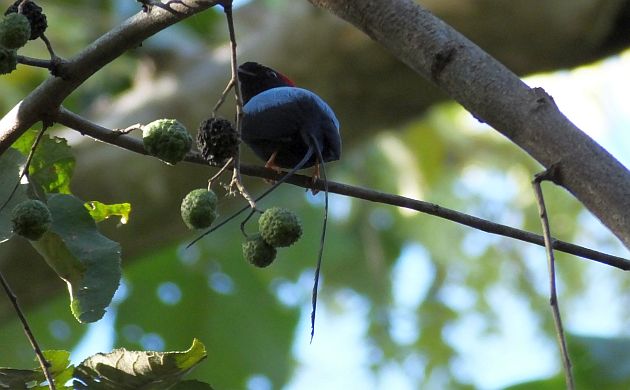
Tis the dry season in Costa Rica and on this side of the mountains, we are under the direct rule of the glaring sun. I walk outside and move from shadow to shade, keeping to the edges of walls and houses. If there were more trees in the Central Valley, the walks would be more leisurely, and, I dare say, with a bit more moisture in the air. But, at present, there’s not enough room for trees in most of the urban zones, only cement, asphalt, and houses. Get to the edge of the urban zone and you can smell the change in the air, a scent that speaks of more life.
The absence of rain is further accentuated by wind that rattles the roofs and rushes through the trees. During cold fronts, the wind has a serious hey-day and dares the trees to hang on to stubborn foliage. Down in the lowlands, it’ even more dry, and the day is accompanied by dust. Cover the optics and roll up the windows because every road is powdered with a fine carpet of dirt just waiting to take flight. I wonder how the birds cope with it but suppose that the dry forest species are more adapted to this fact of dry season life than the birds of the rain on the other side of the country.
Yes, there are birds in those dry, dusty places, and you will see lots of them during the morning hours, especially in the southern part of the Nicoya Peninsula where more forest equals more birds. The rest of the day, they do their hidden thing to keep away from the hot stare of the ruling sun.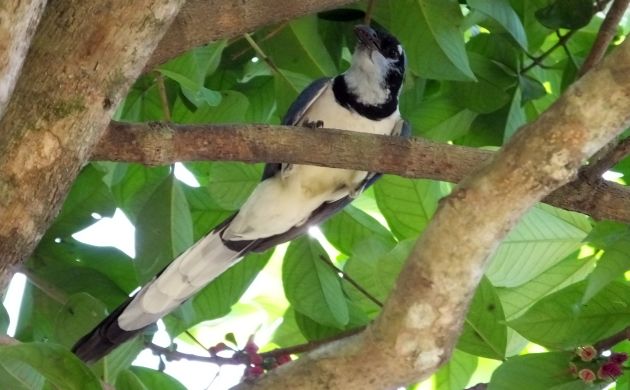
I joined this White-throated Magpie-Jay to relish the solid shade of a pruned Beach Almond.
While birding the Rio Gigante area, I was surprised at the number of White-necked Puffbirds.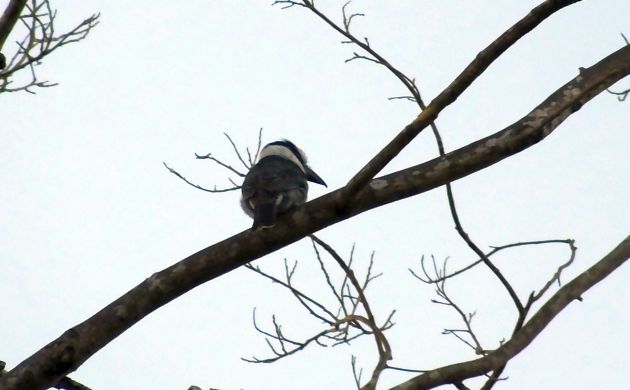
Not a kingfisher, although the White-necked Puffbird is kind of like one.
We had non-stop birding action from dawn until at least 8:30. In fact, Susan, Robert, and I were late for breakfast because the birds wouldn’t stop moving. Olive Sparrow, Rufous-capped Warbler, Banded Wrens, Olivaceous Woodcreeper, and several flycatchers all made it into the list along with several migrants. Ruby-throated Hummingbird was the most common nectivore. It was downright abundant, perhaps because of the high number of flowering trees, and was joined by Green-breasted Mango, Steely-vented Hummingbird, and a few other species of feisty Trochilids.
We also had several beautiful Long-tailed Manakins,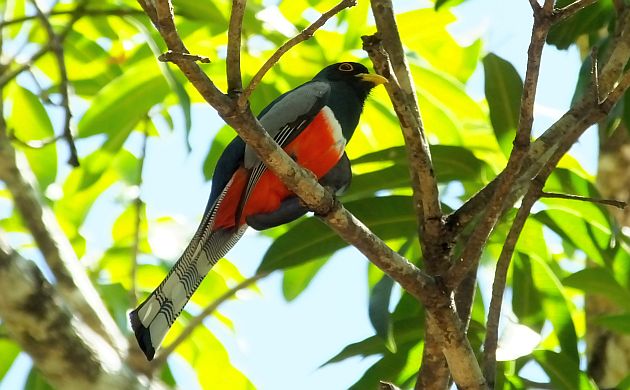
more than one Elegant Trogon (a green instead of copper-hued tail, and a slower, slightly different song than Arizona birds),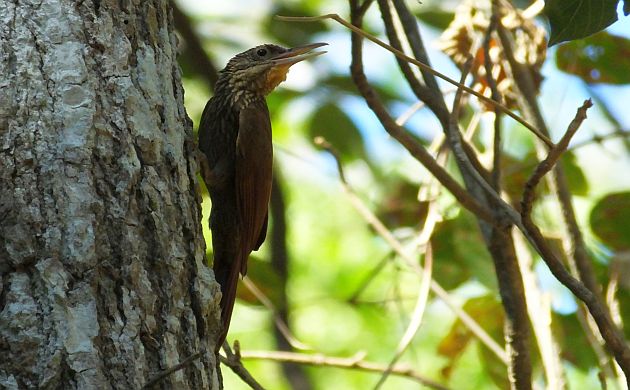
Ivory-billed Woodcreeper,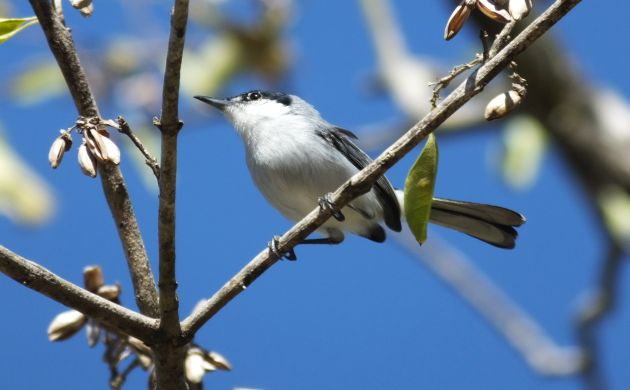
White-lored Gnatcatcher,
and many Myiarchus flycatchers. In fact, I’m not sure if I have ever had so many of those crested, rufousy flycatchers at one site in Costa Rica. Great-crested Flycatchers were quite common, we had several Dusky-capped, and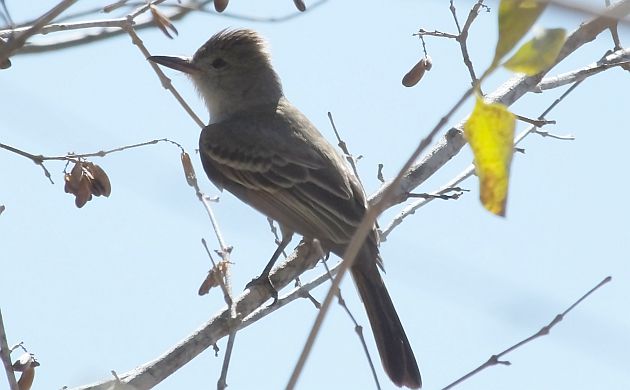
a few Brown-crested Flycatchers,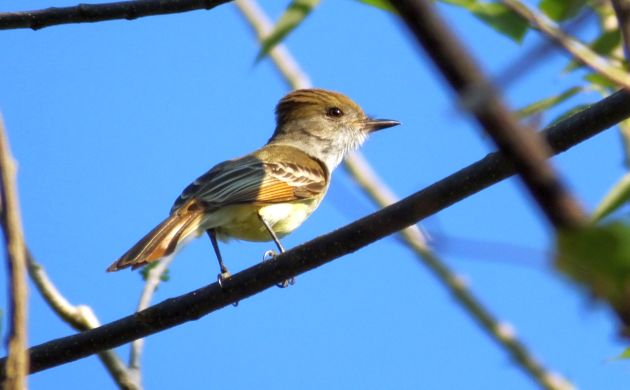
and many Nutting’s Flycatchers.
Out in the fields, Double-striped Thick-knees called, two species of caracaras flopped around, and a Scissor-tailed Flycatcher was content with its Texas-like surroundings. The birding was hot and the dust moved along the roads like a pale brown, airborne river but the mornings were pretty impressive. I would guess that 80% of the species on this eBird list were before 9:00 am.
If you are birding Costa Rica anytime from now until early April, be ready for that dust, wind, and sun on the Pacific slope. However, in the morning, you can also be ready for a few, fine birdy hours.
After 9, wash off the dust in the pool until 4, a bird or two might join you.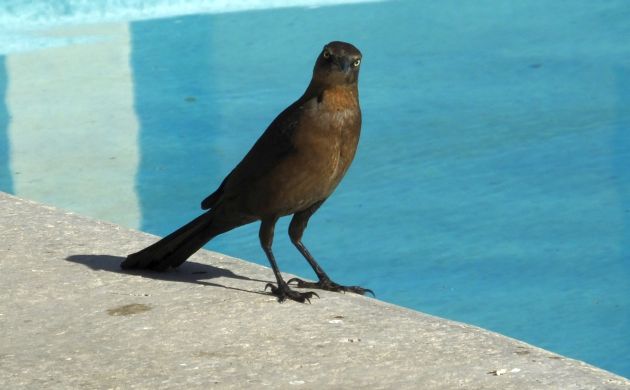






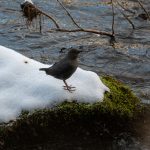

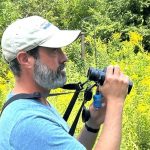
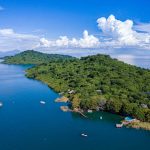



Well, okay: I can see that you included a few brownish birds ahead of my upcoming second post on gulls. Thanks! 🙂